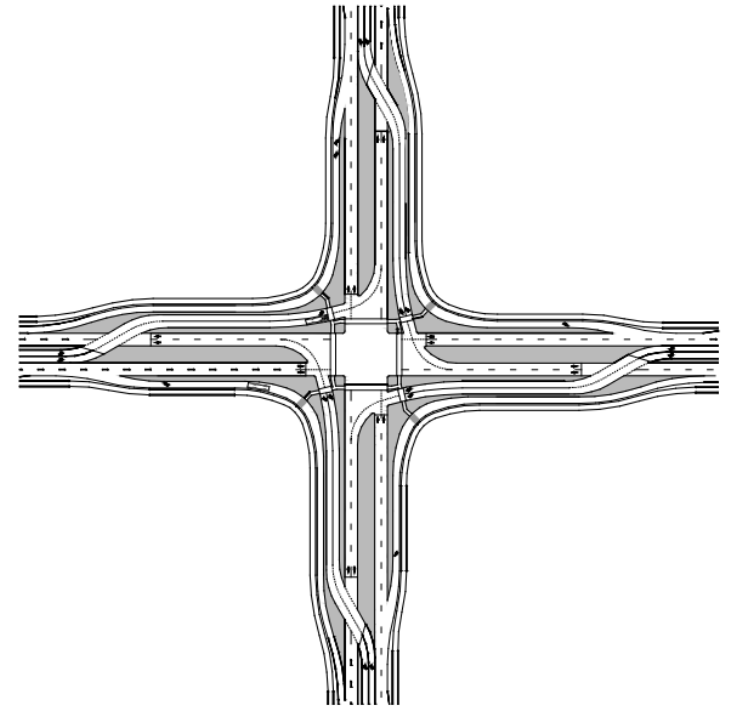14.7.1 Overview
The DLT, also known as a continuous flow intersection (CFI), is an intersection that relocates one or more left-turn movements on an approach to the other side of the opposing traffic flow. This allows left-turn movements to proceed simultaneously with the through movements and eliminates the left-turn phase for this approach.
TxDOT has adopted the
as the primary source for DLT Guidelines along with TxDOT’s
.The information contained in this section is considered a companion guide and is intended to document TxDOT’s suggested approach to DLT design. See
for a typical four-legged DLT with displaced lefts on a major street.

Figure 14-24: Four-legged DLT with Displaced Lefts on a Major Street
Source: VDOT
Benefits of a DLT include a reduction in the number of signal phases with a resultant increase in vehicle throughput. See
for an example of a DLT Intersection with displaced left-turns on all approaches. Conditions where a DLT may not be suitable are:
- Areas with limited ROW, due to the large footprint required for a DLT;
- Where there is a lack of driver familiarity and no driver education is provided; and
- Intersections with nearby adjacent driveways.

Figure 14-25: DLT Intersection with Displaced Left-Turns on All Approaches
Source: FHWA DLT Informational Guide